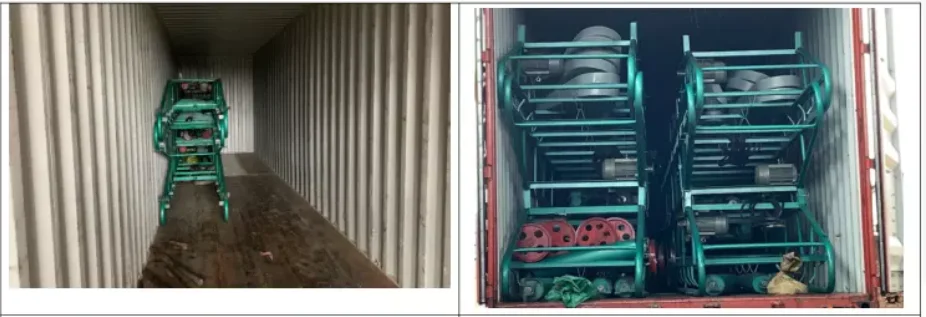cage poultry farming
Dec . 03, 2024 16:49 Back to list
cage poultry farming
The Rise of Cage Poultry Farming A Comprehensive Overview
Cage poultry farming, a method where birds are confined in cages for the purposes of commercial egg or meat production, has become a dominant practice in the poultry industry. This system offers multiple benefits as well as raised concerns about animal welfare and sustainability, prompting a thorough examination of its impact on the poultry sector and society at large.
The Structure of Cage Poultry Farming
Cage poultry farming primarily involves the use of battery cages, which are small enclosures designed to hold multiple hens. Each cage typically houses four to six birds and is stacked in rows within large, climate-controlled buildings. This setup allows for efficient management of the flock, including feed distribution, waste control, and health monitoring. Additionally, automated systems are often employed to reduce labor costs and improve production efficiency.
One of the most significant advantages of this farming method is its economic feasibility. Battery cages maximize space and resource utilization; producers can raise thousands of birds in a relatively small area. This intensive farming system leads to lower production costs per unit of output, making egg and poultry meat more accessible to consumers worldwide. As the global demand for protein-rich foods continues to rise, cage poultry farming has provided a quick solution to meet the needs of an expanding population.
The Controversy Surrounding Animal Welfare
Despite its economic advantages, cage poultry farming has faced growing criticism from animal welfare advocates
. The confinement of birds in small cages has been linked to a range of welfare issues, including the inability to exhibit natural behaviors such as perching, nesting, and foraging. Critics argue that these conditions lead to significant stress, aggression, and health problems among hens, including bone fractures and feather pecking.In response to public outcry, several countries and regions have begun to implement strict regulations regarding cage sizes and conditions. For instance, several European countries have banned battery cages altogether in favor of more humane alternatives, such as free-range and barn systems. Similarly, states in the U.S., such as California and Massachusetts, have passed legislation aimed at curbing the use of battery cages. These movements indicate a shifting sentiment toward prioritizing animal welfare in food production systems.
cage poultry farming

The Environmental Impact
Another critical aspect of cage poultry farming is its environmental footprint. While intensive systems can produce lower emissions per bird compared to traditional farming methods, the concentrated nature of waste can lead to significant environmental degradation. Manure accumulation can contaminate local waterways if not properly managed, contributing to issues like nutrient runoff and water pollution.
Furthermore, the debate over sustainability has intensified as consumers increasingly seek ethically produced food. Cage-free and organic labels have become popular, reflecting a shift in consumer preferences toward farming practices that promote environmental stewardship and animal welfare. As a result, some producers are transitioning away from traditional cage systems, opting for alternative approaches that allow greater freedom for birds and reduced environmental impact.
The Future of Cage Poultry Farming
As the poultry industry evolves, so too does the practice of cage poultry farming. Innovations in technology, such as automated systems for monitoring animal health and behavior, have the potential to improve the welfare of confined birds. Research is underway to develop alternative housing systems that balance productivity with ethical considerations, paving the way for more sustainable practices.
Moreover, consumer demand will play a pivotal role in shaping the future of poultry farming. With more individuals prioritizing the origins of their food, companies are under pressure to adopt practices that reflect ethical standards. Thus, it is essential for producers to find a balance between efficiency and humane treatment in order to maintain their market position and consumer trust.
Conclusion
In conclusion, cage poultry farming presents a multifaceted paradigm within the agricultural sector. While it has proven to be an efficient and cost-effective method of poultry production, the ethical and environmental concerns associated with this practice cannot be overlooked. As the industry moves forward, it will be crucial for stakeholders to address these challenges, ensuring that poultry farming is both productive and responsible. Ultimately, achieving a sustainable balance will require collaboration among producers, consumers, and policymakers to nurture a future that respects both animal welfare and the environment.
-
Hot Sale 24 & 18 Door Rabbit Cages - Premium Breeding Solutions
NewsJul.25,2025
-
Automatic Feeding Line System Pan Feeder Nipple Drinker - Anping County Yize Metal Products Co., Ltd.
NewsJul.21,2025
-
Automatic Feeding Line System Pan Feeder Nipple Drinker - Anping County Yize Metal Products Co., Ltd.
NewsJul.21,2025
-
Automatic Feeding Line System - Anping Yize | Precision & Nipple
NewsJul.21,2025
-
Automatic Feeding Line System - Anping Yize | Precision & Nipple
NewsJul.21,2025
-
Automatic Feeding Line System-Anping County Yize Metal Products Co., Ltd.|Efficient Feed Distribution&Customized Animal Farming Solutions
NewsJul.21,2025






